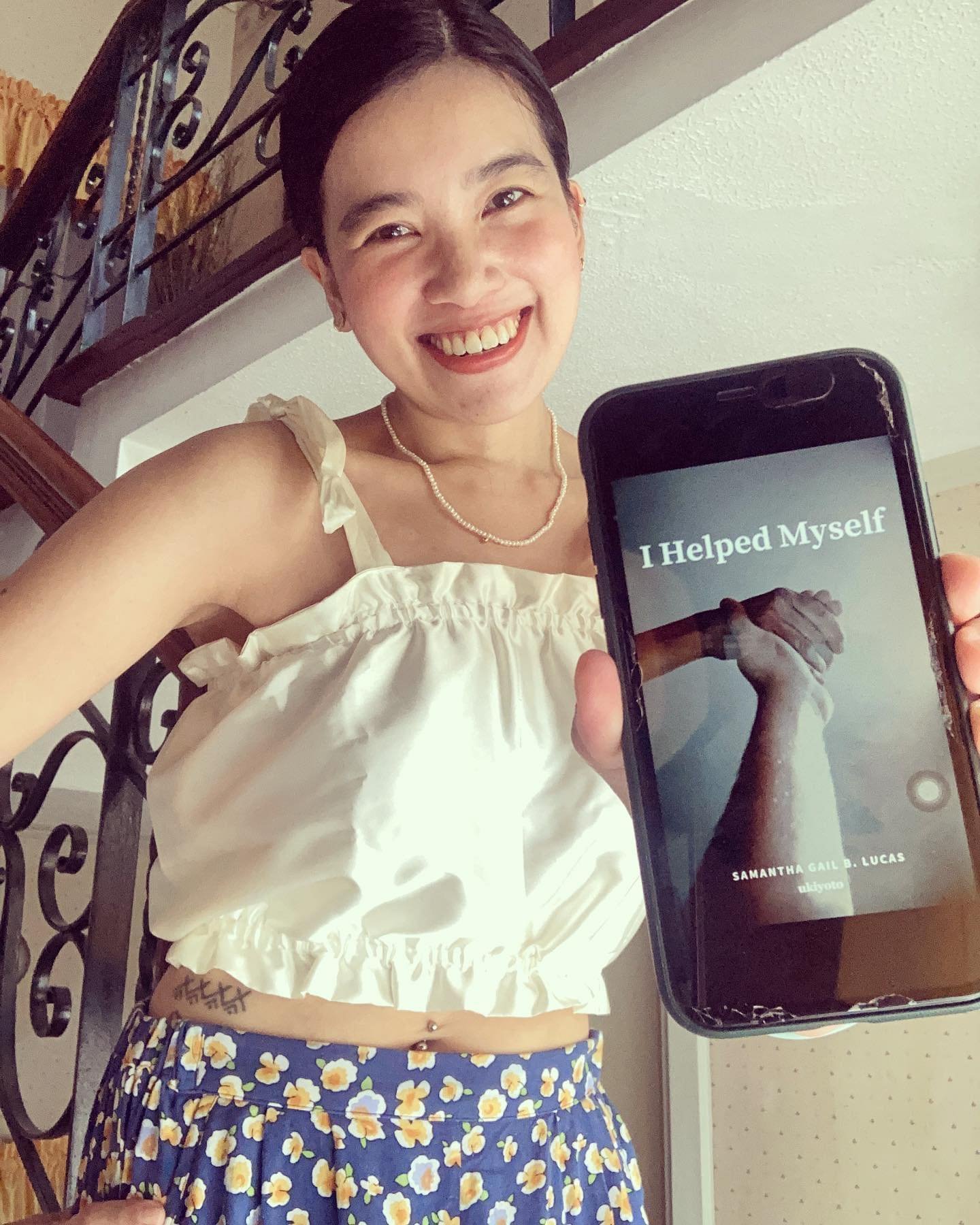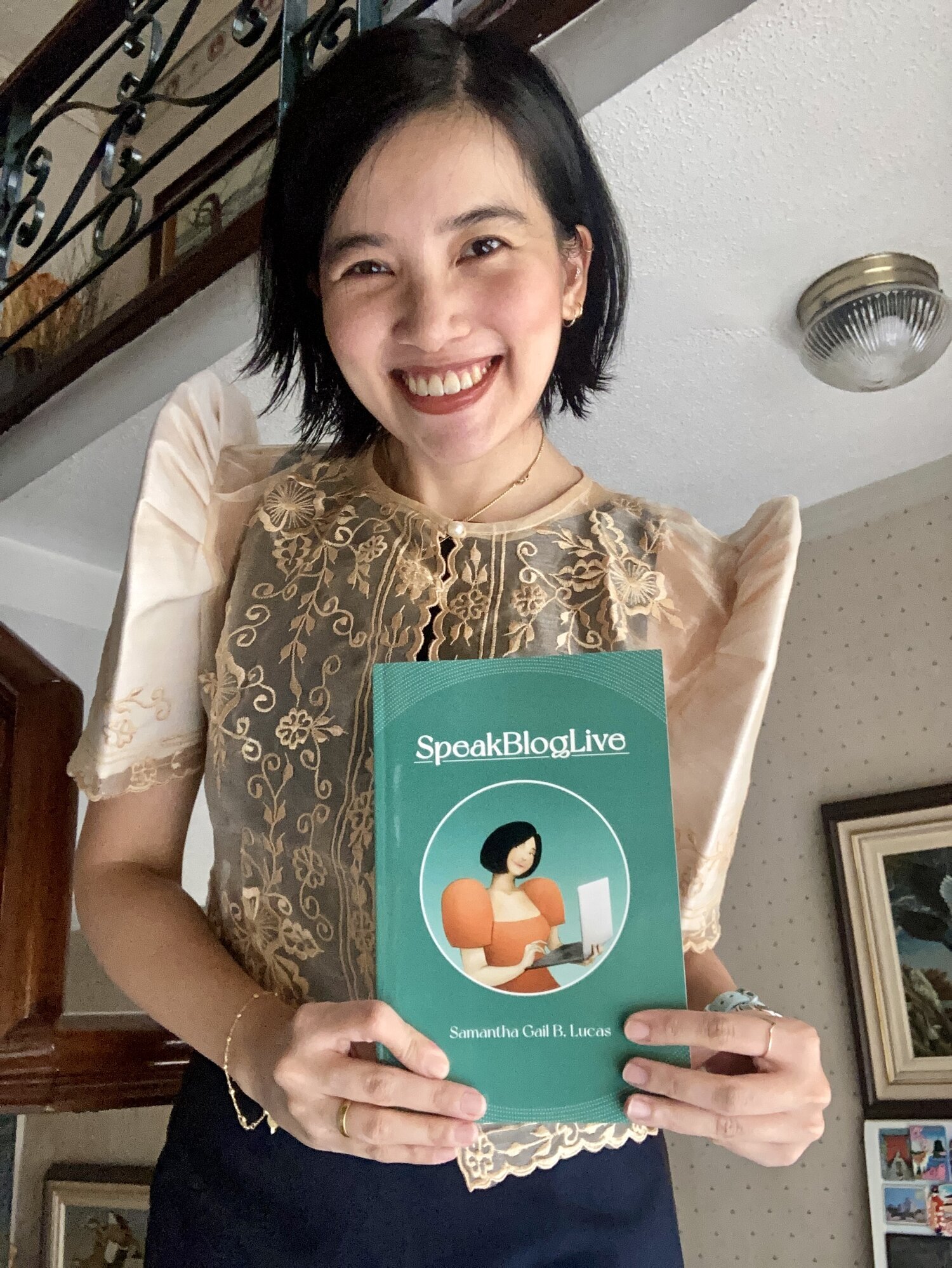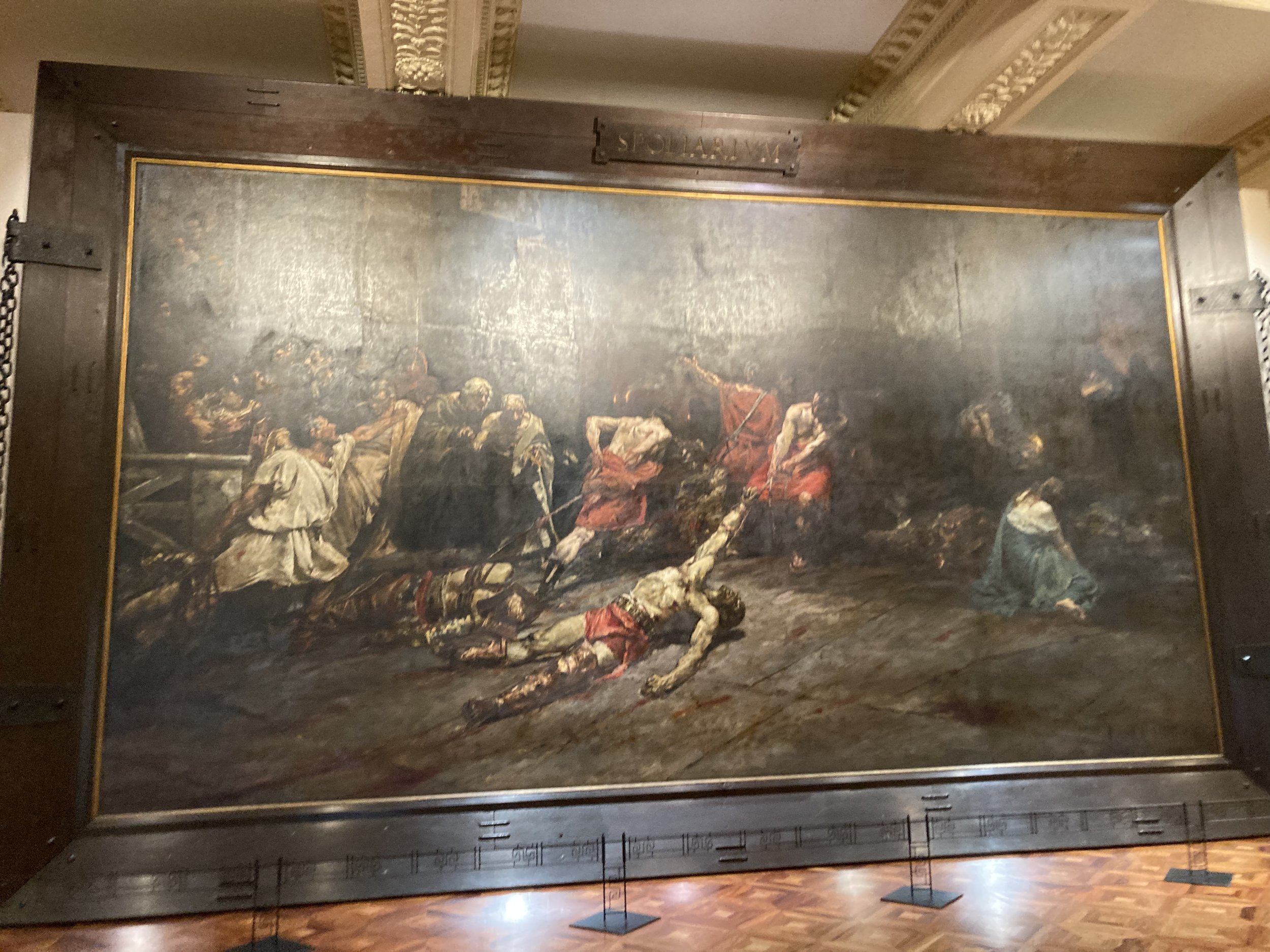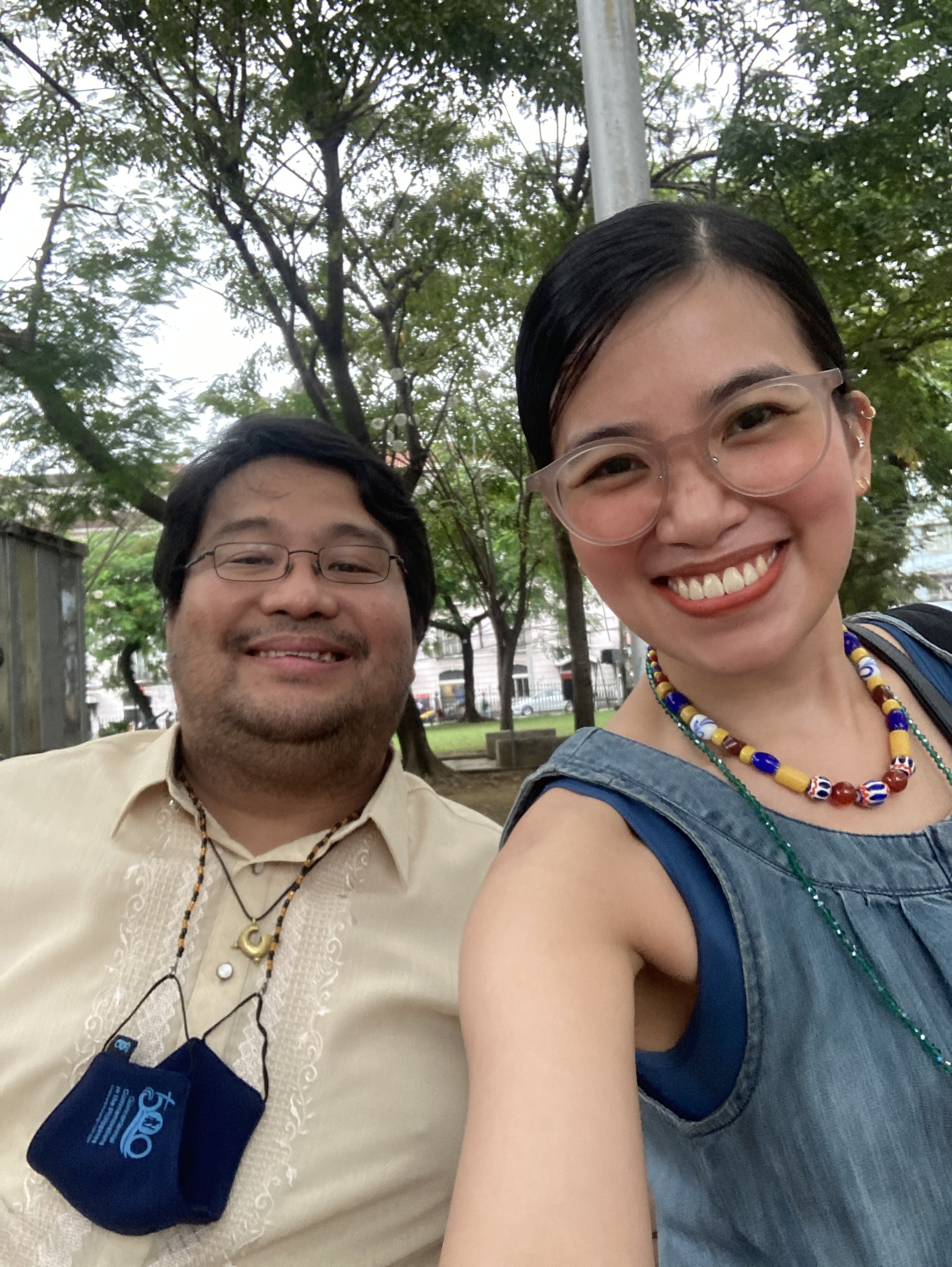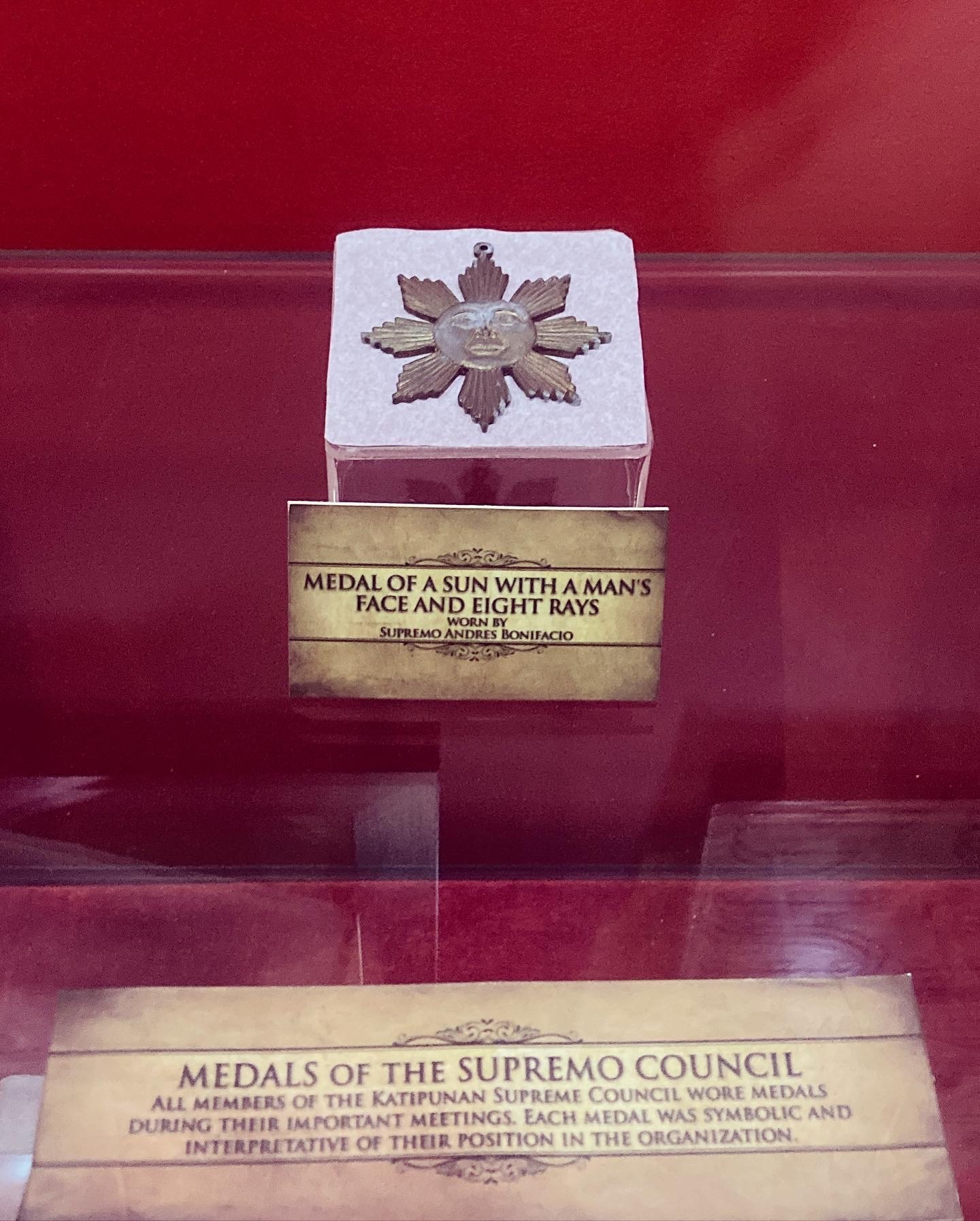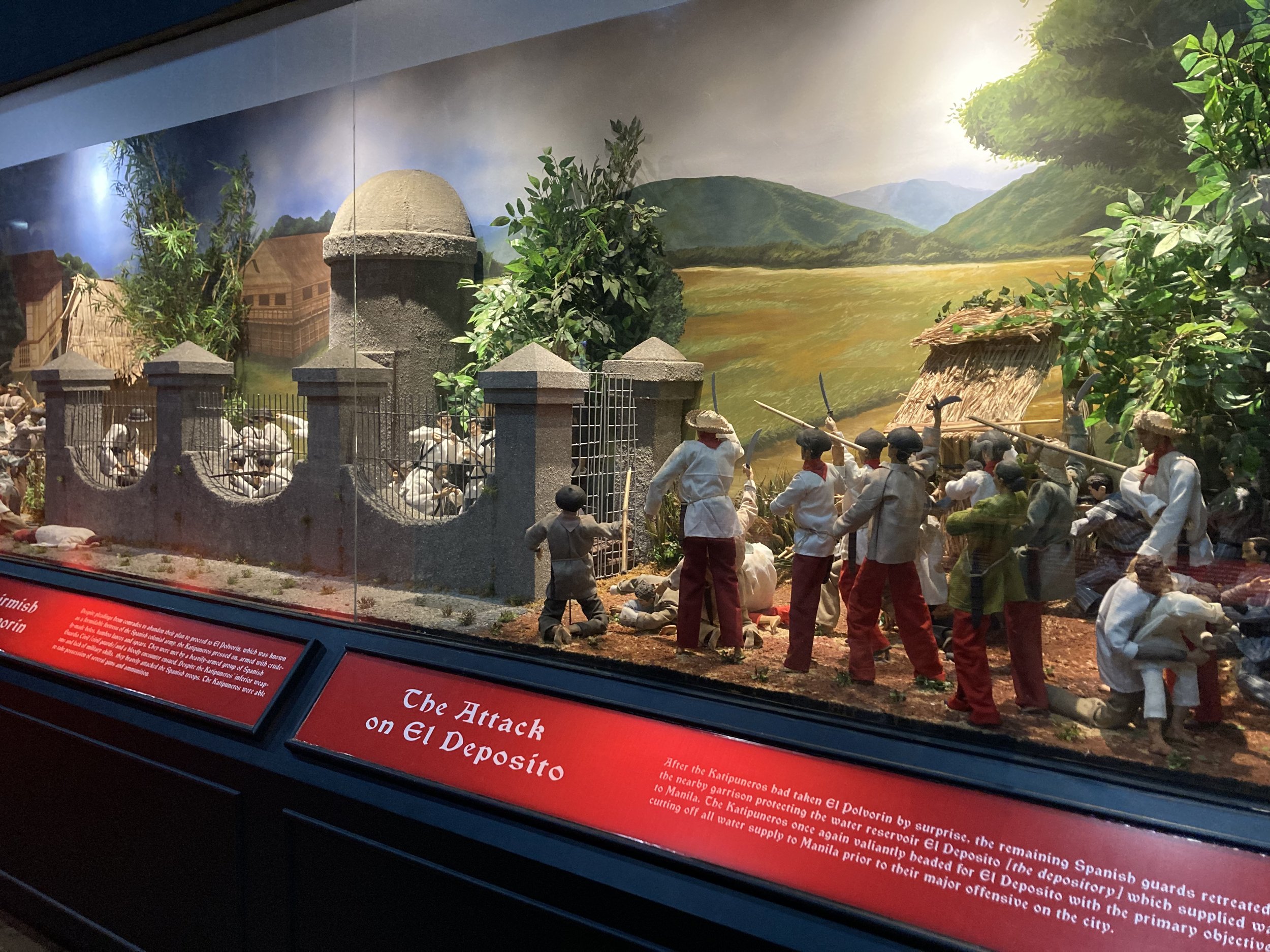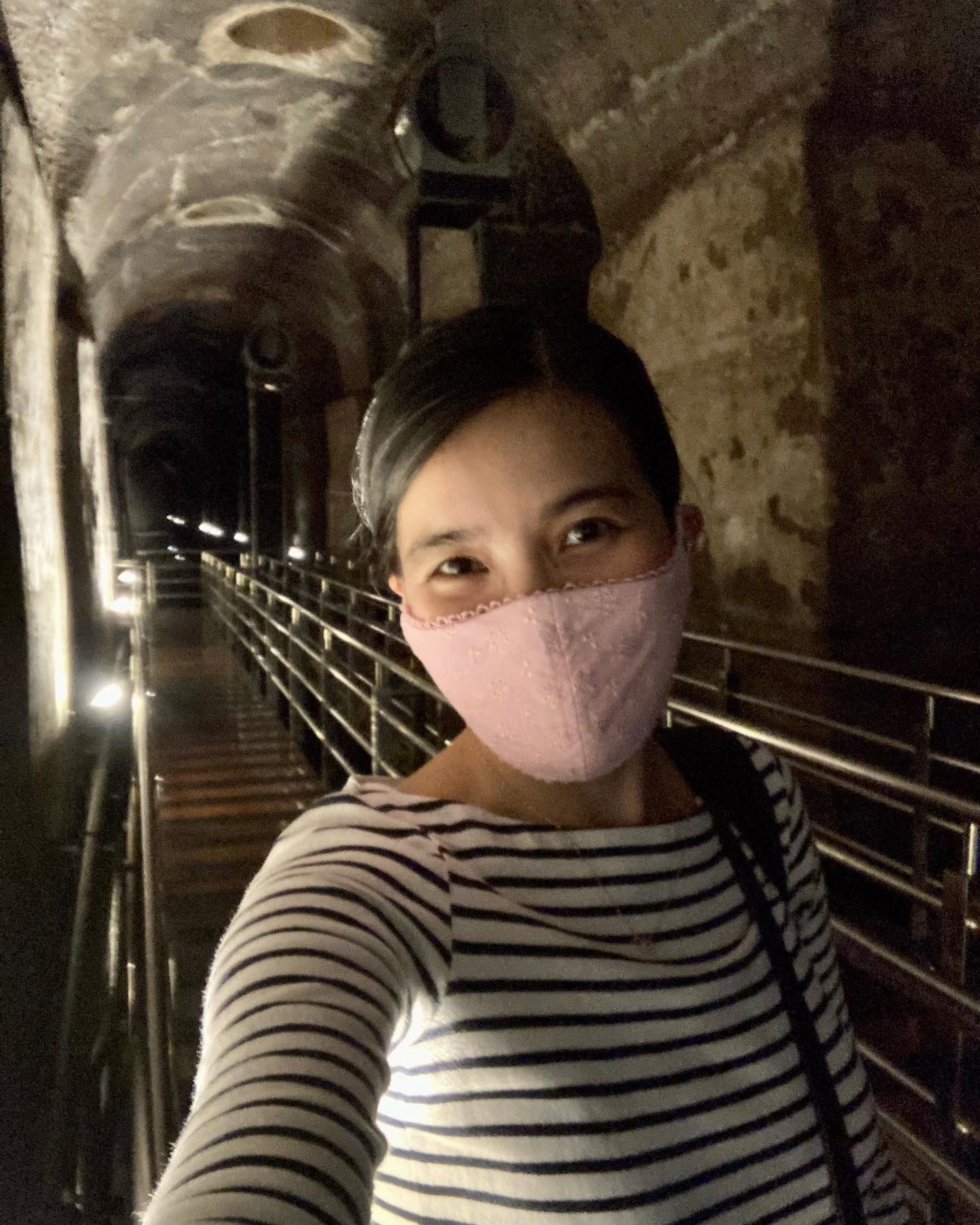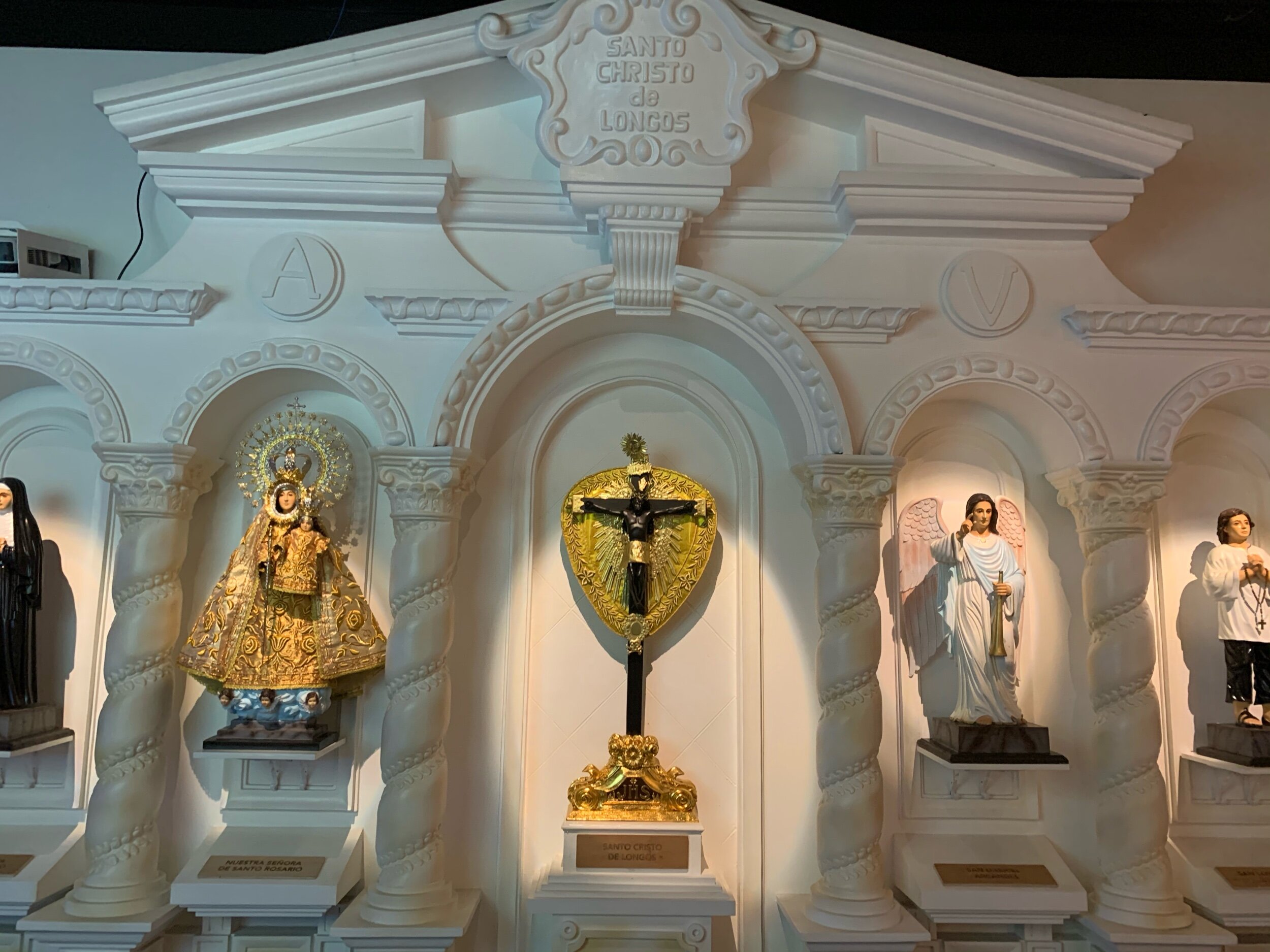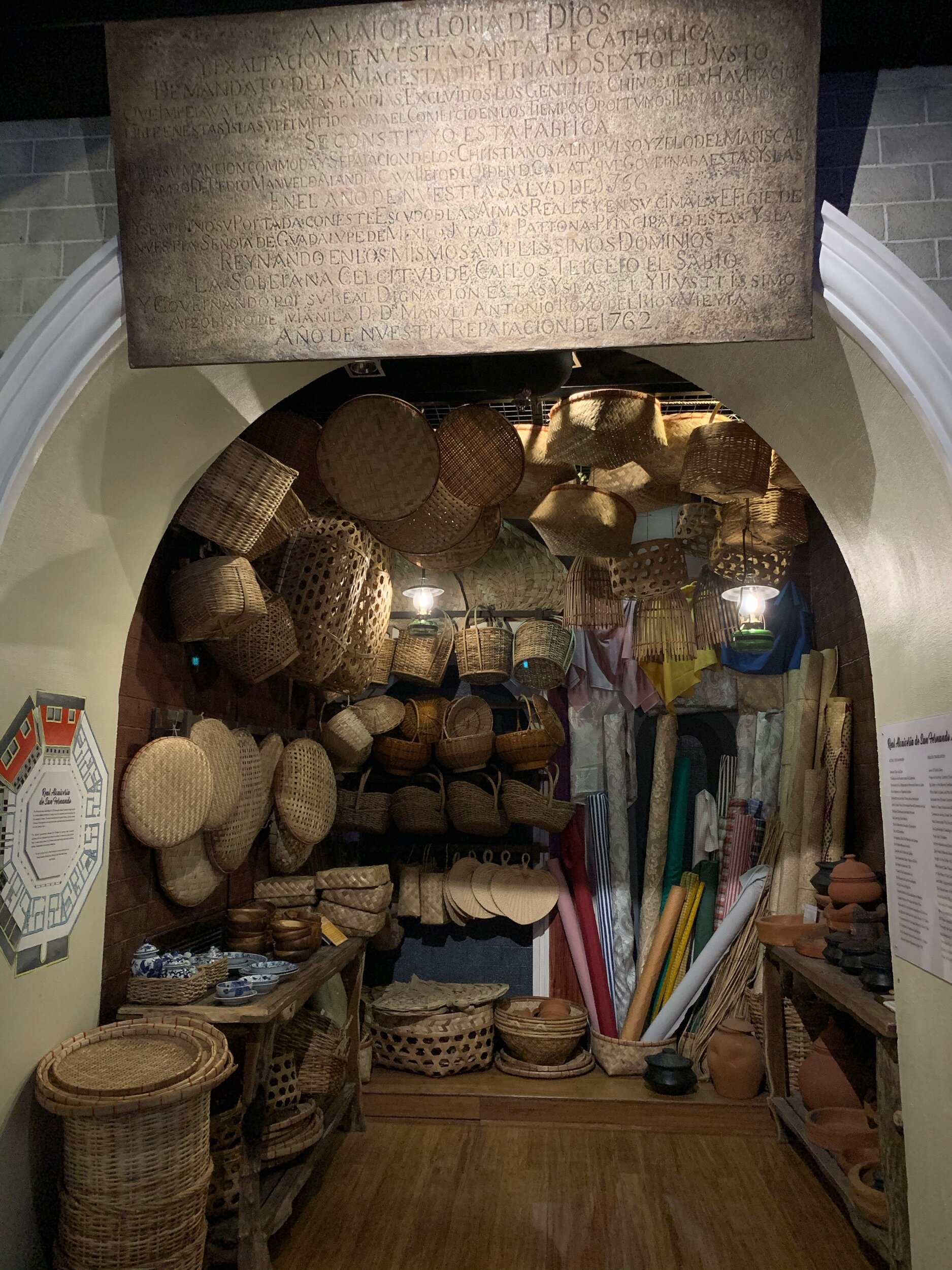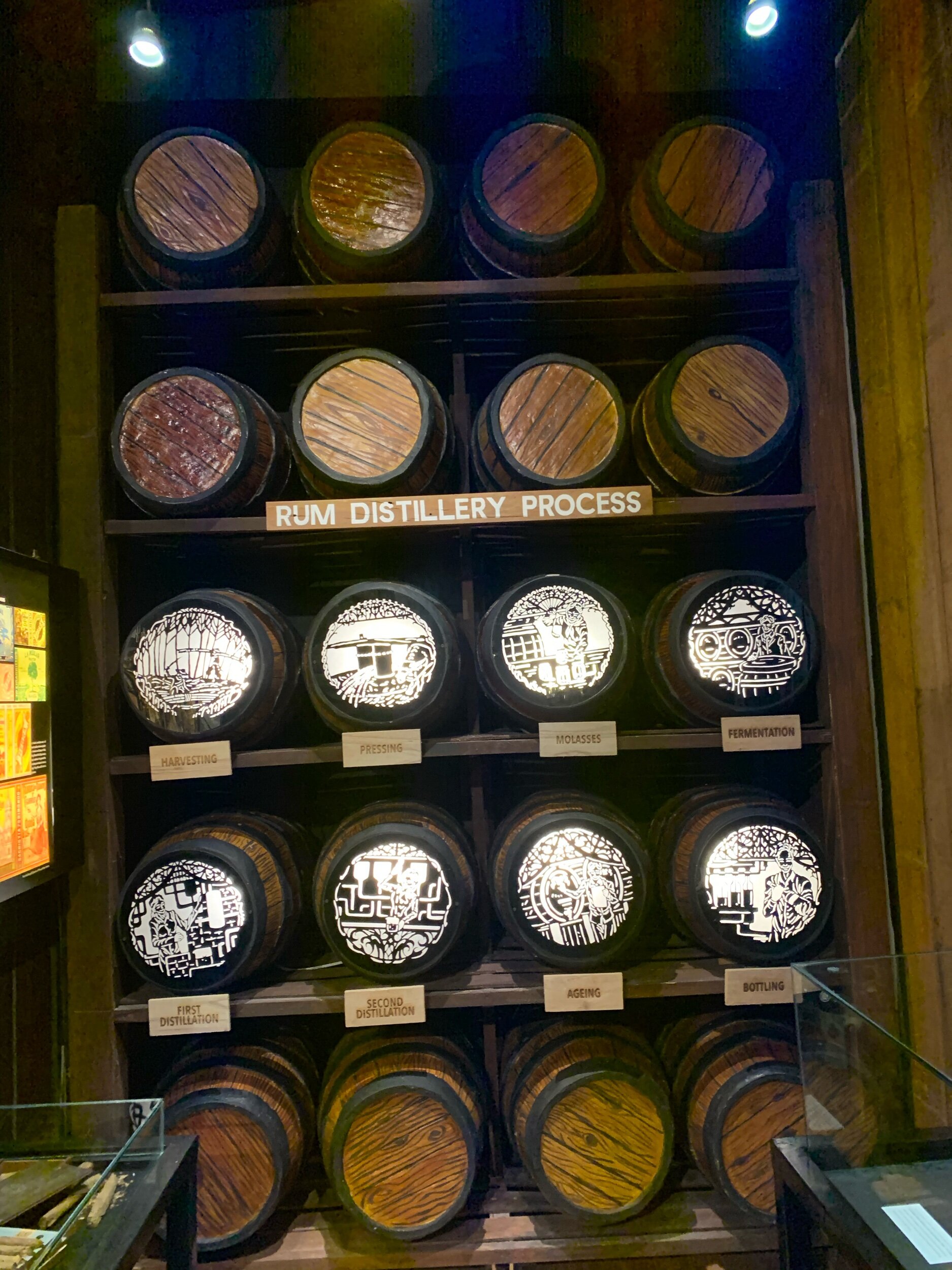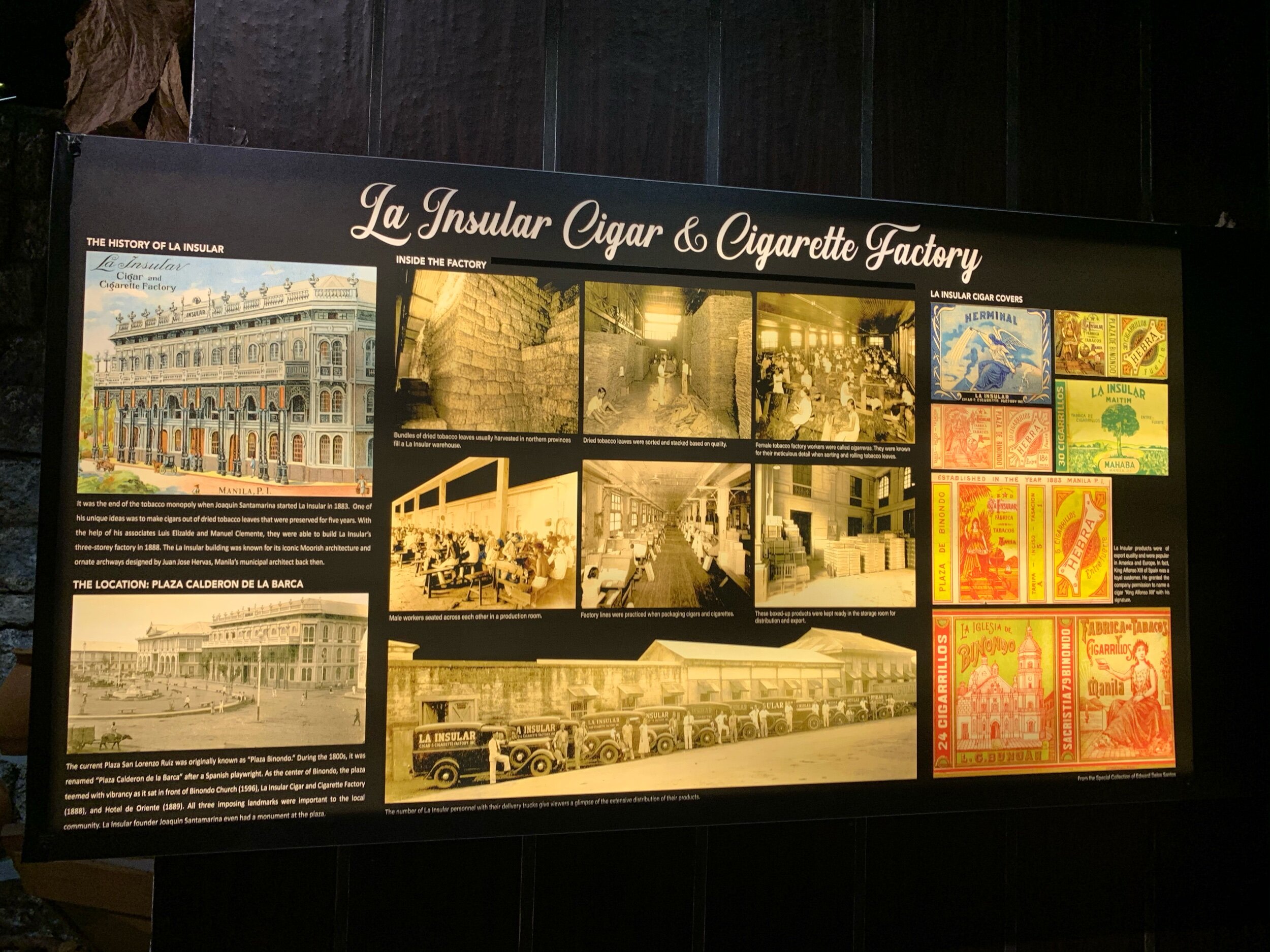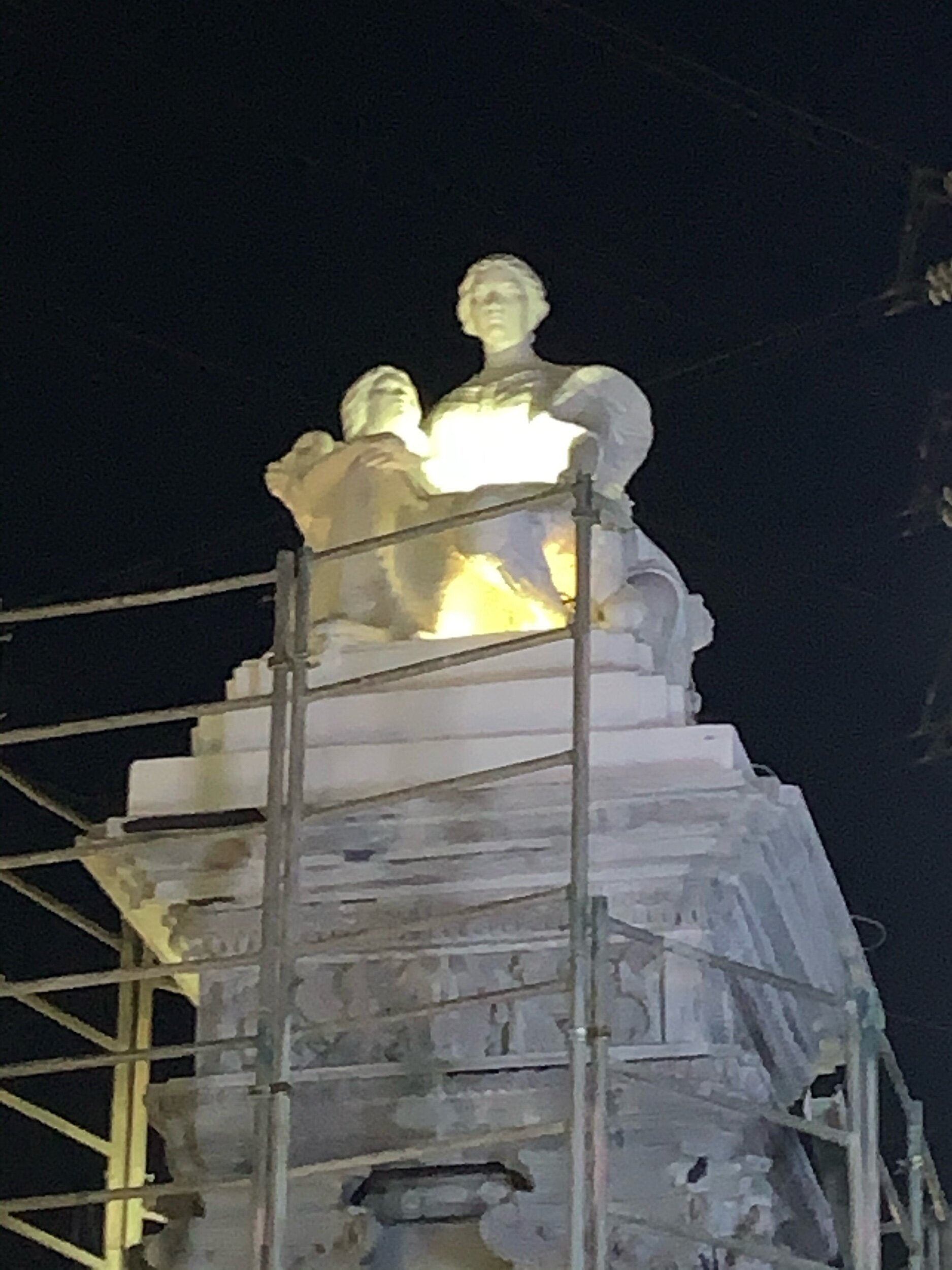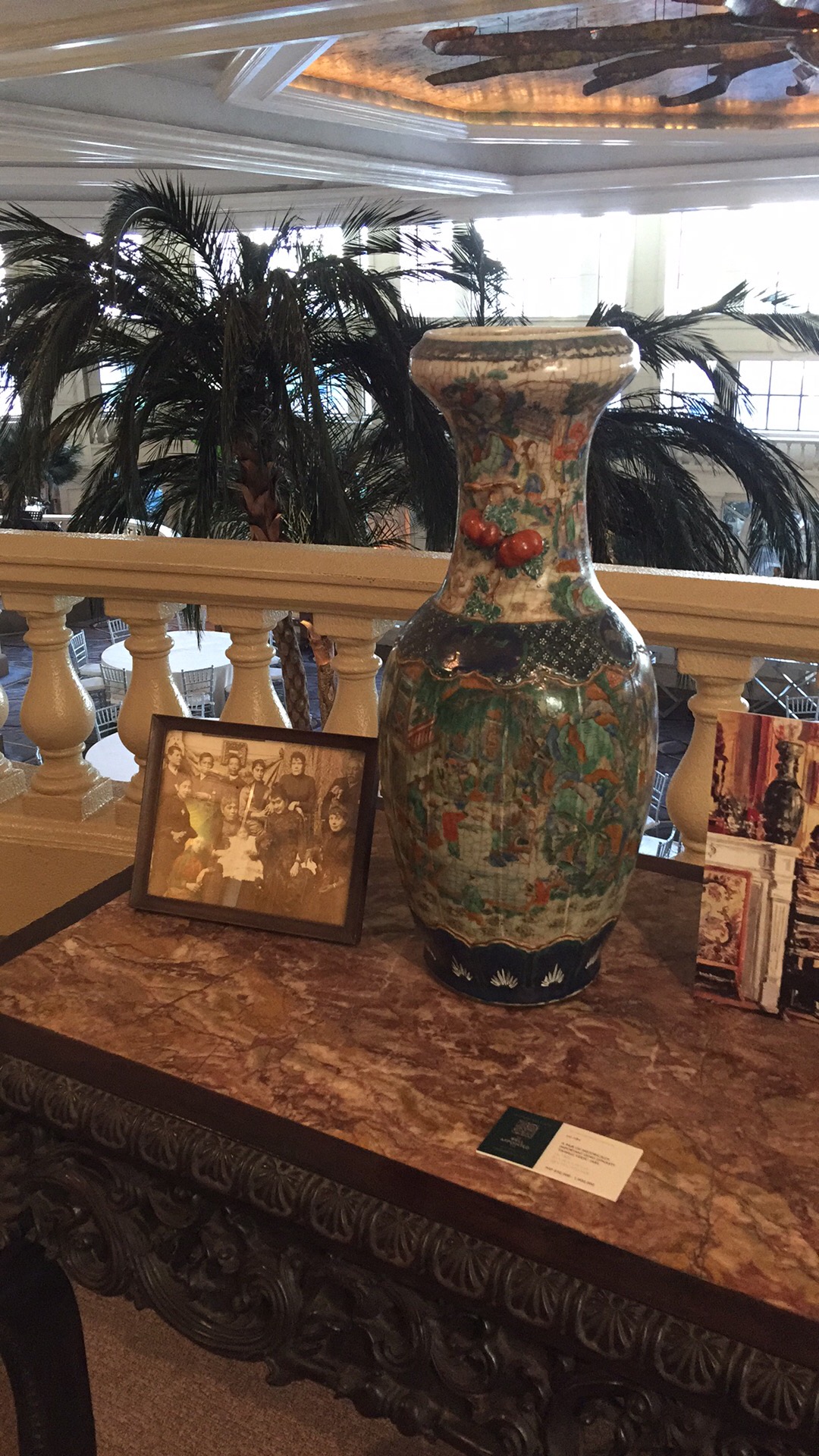I celebrated Rizal Day by appreciating treasures at the National Museum of Fine Arts. Here are some of my favorites! Hope you can also book a visit. It’s safe and only a few people were there. 🖼
Rizal Day Tour With Prof. Xiao Chua
I joined a free Rizal Day Tour organized by National Parks Development Committee (NPDC). It was presented by Prof. Xiao Chua, a public historian on television and a professor at DLSU and UP Diliman.
We retraced Rizal’s final steps before his execution. We toured Intramuros, Fort Santiago, and Rizal Park Luneta. The highlight of the tour was getting close to the monument under which Dr. Jose Rizal rests. It was a dream come true for a Rizal fan like me.
Prof. Xiao Chua is an entertaining and engaging historian who will make the past relevant today. Follow him for more webinars and talks on Rizal, history, and heroism.
Museo ng Katipunan
The Museo ng Katipunan will teach you about the heroism of the Katipunan revolutionaries and inspire you to love your own country 🇵🇭
Museo El Deposito
@museoeldeposito is a water reservoir from the Spanish colonial period. It is stunning and hauntingly beautiful in person. This was also the setting of the Lunod music video by @benandbenmusic @juankarlos @zildbenitez 🖤 @nyouconsultancy
#MyIntramurosStory
I recently got featured by the Intramuros Administration on their Facebook page. I shared my photo at the Casa Museum Museum.
I shared my story on the Walled City:
There was a time, before the pandemic when I would go to Intramuros every week. I am an avid brisk walker, and the change of scenery sparked my imagination while burning calories. What would have been my life if I lived during the Spanish era? Will I be happy in this bedroom? Will the cobblestones inspire me to keep on exploring beyond the walls? Will there be a place for me under the colonial sun? My Intramuros walks inspired me to think of a life different from my own. These walks pushed me to read historical fiction during the lockdown. I look forward to returning to Intramuros when things are much better.
I am passionate about the Walled City because it is a witness to our nation’s history and culture. I enjoy my walks there, and I want to go back once it is safe to go to out again. I hope that the pandemic will be over soon so that I can continue #myintramurosstory.
PETA’S STORYTELLING SUNDAYS TELLS ISRAEL-PH HISTORY
QUEZON CITY, Philippines – The Philippine Educational Theater Association’s (PETA) weekly online series, Storytelling Sundays, embarks on a unique partnership with the Embassy of Israel in the Philippines to tell a heartwarming tale about survival and the friendship between Filipinos and the Jews, borne out of a time of persecution and suffering.
Storytelling Sundays was one of PETA’s first initiatives in June 2020 to bring the theater experience to the digital platform. With a mix of different storytelling and performance techniques such as animation, shadow puppetry, musical numbers, and more, Storytelling Sundays explored different tales about Philippine history, heroes, and heroism. But apart from that, the series’ writer, Felinda Bagas, says that they were also looking for something new, like a part of Philippine history or a “lesser known hero” seldom taught in schools.
“The story of the Manilaners came up,” Felinda Bagas reveals. “It’s a very interesting story; it’s just the kind we were looking for. But there is no children’s book about the Manilaners yet. We decided right then that we’ll just do it, write and produce a children’s story about the Manilaners for Storytelling Sundays.” With the Embassy of Israel in the Philippines as a partner in the project, PETA continued to develop the story eventually called The Doors of Chai, written by Felinda Bagas and featuring PETA President Cecilia B. Garrucho as the storyteller.
The Doors of Chai narrates the journey and friendship of two children – both displaced, both grieving for the homes they had to leave behind, both struggling with being in a strange place – who find comfort and acceptance in each other. It is set during the enactment of then-Philippine President Manuel L. Quezon’s Open Door Policy, which allowed Jews to seek refuge in the Philippines and escape the Nazi regime and the Holocaust.
“We will never forget this. Most countries shut their doors, but the Philippines, through its leader, President Quezon, decided to open its doors,” says Israeli Ambassador to the Philippines Rafael Harpaz. “The legacy of President Quezon will always be carved on our hearts.” Israel and the Philippines continue to exhibit their friendship to this day by supporting each other in diplomatic, economic relations, and more, especially in times of crisis. According to PETA Artistic Director and The Doors of Chai director Maribel Legarda, this theme of friendship in times of crisis was what compelled PETA to pursue this unique Storytelling Sundays episode.
“I think this is a great message especially now during a pandemic. We should be unifying ways to empathize and be compassionate with each other,” says Maribel Legarda. “That’s one of the things that compelled PETA to do this – the beauty of the story of two nations helping each other in times of trouble. This can resonate through generations because there may always be some sort of war or pandemic the world deals with, but what’s important is our capacity to be able to rise above the challenges and make a better world in spite of them.”
Set to be the seventeenth episode of Storytelling Sundays hosted by John Moran, The Doors of Chai is a rare gem of a history lesson. According to Felinda Bagas, the heroism in the story and in the Open Door Policy roots from compassion. “Heroes became heroes because they cared enough for others. They found the strength and courage to go beyond what they think they are able to do for the sake of other people,” she says.“That’s what The Doors of Chai is all about: simple acts of heroism – of ordinary people, of an ordinary child – that led to the survival of a generation.”
The Doors of Chai also features Neil Daza as the director of photography, with animation by Ellen Ramos, music by Jeff Hernandez, and sound design by Jethro Joaquin.
“I would like to extend my thanks to PETA for initiating this partnership with the Embassy,” says Ambassador Harpaz. “Thank you for assisting us spread this great story in the history of Israel and the Philippines’ friendship.”
This episode is testament to viewers that we can be heroes to each other any day. During this pandemic, The Doors of Chai can be a source of comfort and inspiration to all who watch it.
Tune in on PETA’s official Facebook page at www.facebook.com/PETATHEATER or Israel in the Philippines’ official Facebok page at www.facebook.com/IsraelinPhilippines for the premiere of Storytelling Sundays Episode 17, The Doors of Chai, on October 18 (Sunday) at 7:00 PM.
10 & 11/F Avecshares Center, 1132 University Parkway, North Bonifacio Global City, Taguig City 1634
Telephone No. 883-9500 ● Fax No. 883-9555 ● E-mail Address: info@manila.mfa.gov.il
“The story of the Manilaners came up,” Felinda Bagas reveals. “It’s a very interesting story; it’s just the kind we were looking for. But there is no children’s book about the Manilaners yet. We decided right then that we’ll just do it, write and produce a children’s story about the Manilaners for Storytelling Sundays.” With the Embassy of Israel in the Philippines as a partner in the project, PETA continued to develop the story eventually called The Doors of Chai, written by Felinda Bagas and featuring PETA President Cecilia B. Garrucho as the storyteller.
The Doors of Chai narrates the journey and friendship of two children – both displaced, both grieving for the homes they had to leave behind, both struggling with being in a strange place – who find comfort and acceptance in each other. It is set during the enactment of then-Philippine President Manuel L. Quezon’s Open Door Policy, which allowed Jews to seek refuge in the Philippines and escape the Nazi regime and the Holocaust.
“We will never forget this. Most countries shut their doors, but the Philippines, through its leader, President Quezon, decided to open its doors,” says Israeli Ambassador to the Philippines Rafael Harpaz. “The legacy of President Quezon will always be carved on our hearts.” Israel and the Philippines continue to exhibit their friendship to this day by supporting each other in diplomatic, economic relations, and more, especially in times of crisis. According to PETA Artistic Director and The Doors of Chai director Maribel Legarda, this theme of friendship in times of crisis was what compelled PETA to pursue this unique Storytelling Sundays episode.
“I think this is a great message especially now during a pandemic. We should be unifying ways to empathize and be compassionate with each other,” says Maribel Legarda. “That’s one of the things that compelled PETA to do this – the beauty of the story of two nations helping each other in times of trouble. This can resonate through generations because there may always be some sort of war or pandemic the world deals with, but what’s important is our capacity to be able to rise above the challenges and make a better world in spite of them.”
Set to be the seventeenth episode of Storytelling Sundays hosted by John Moran, The Doors of Chai is a rare gem of a history lesson. According to Felinda Bagas, the heroism in the story and in the Open Door Policy roots from compassion. “Heroes became heroes because they cared enough for others. They found the strength and courage to go beyond what they think they are able to do for the sake of other people,” she says.“That’s what The Doors of Chai is all about: simple acts of heroism – of ordinary people, of an ordinary child – that led to the survival of a generation.”
The Doors of Chai also features Neil Daza as the director of photography, with animation by Ellen Ramos, music by Jeff Hernandez, and sound design by Jethro Joaquin.
“I would like to extend my thanks to PETA for initiating this partnership with the Embassy,” says Ambassador Harpaz. “Thank you for assisting us spread this great story in the history of Israel and the Philippines’ friendship.”
This episode is testament to viewers that we can be heroes to each other any day. During this pandemic, The Doors of Chai can be a source of comfort and inspiration to all who watch it.
Tune in on PETA’s official Facebook page at www.facebook.com/PETATHEATER or Israel in the Philippines’ official Facebok page at www.facebook.com/IsraelinPhilippines for the premiere of Storytelling Sundays Episode 17, The Doors of Chai, on October 18 (Sunday) at 7:00 PM.
Source: EMBASSY OF ISRAEL
MANILA
10 & 11/F Avecshares Center, 1132 University Parkway, North Bonifacio Global City, Taguig City 1634
Telephone No. 883-9500 ● Fax No. 883-9555 ● E-mail Address: info@manila.mfa.gov.il
The Last Manilaners
I can write a long entry about last night, but I am still not over how excellent the new iWant docuseries The Last Manilaners is. It is now streaming on iWant, and I highly recommend it. It is the perfect content for us WWII enthusiasts, and you won’t be disappointed with how well-researched and rendered it is.
I was invited by my friends from the Embassy of Israel in the Philippines, and I am thankful for the chance to see the series on the big screen. The Dolphy Theater was the perfect venue for the esteemed event, and it was a fitting tribute to the resilience of the Manila Jewish refugees.
Here’s to more historical events this 2020!
The author poses at the red carpet
The author with Danica Marollano, press officer
The author with Jamela Macalino of the Israeli Embassy
The Last Manilaners is now streaming on iWant
Hotel Luna
I recently stayed at the Hotel Luna with my US-based family. It was our first time at Vigan, the historical heritage town at Ilocos Sur. I was excited to visit this Hispanic city, and I was lucky to have stayed at the first and only museum hotel in the country.
Hotel Luna is located at the heart of Vigan, Ilocos Sur
I am sharing with you my favorite artworks at Hotel Luna. It was magical to stay at a hotel with paintings, sculptures, and history.
I hope that you will also visit Vigan soon!
Three Women by BenCab
Maria Makiling by Abdulmari Asia Imao
Untitled by Juvenal Sanso
Gregorio del Pilar by Abdulmari Asia Imao
Boxes and Jarlet by Arturo Luz
The author with various artworks at Hotel Luna
Martyr’s Struggle by BenCab
Laces and Roses by Louie Tolentino
Cradle of Hope in Pink by Ramon Orlina
La Mandolinera by Juan Luna y Novicio
The pool at Hotel Luna attracts city guests
The author is happy to begin her Vigan journey at Hotel Luna
Chinatown Museum
Last January 7, I explored Binondo with my friend Mitzie. We started our day with a visit to the Chinatown Museum. It is conveniently located at the fourth floor of Lucky Chinatown Mall, which is right in front of Binondo Church.
It’s proximity to the center of Chinese Catholicism means that the museum begins with a model of the Binondo Church
Binondo Church replica
Icons of Chinese-Filipino faith welcome guests to the museum
The next gallery was a rich display of trade products which went through Bindondo since the Spanish colonial period.
Chinese trade products are on display at the museum
The Manton de Manila is one of the important trade products during the Galleon Trade
Ceramics are some of the remarkable trade products that passed through Binondo
Spices are abundant in the Philippines and neighboring countries
One of the highlights of the museum is the Alcaiceria, which was the residence and trading post of Chinese transients.
The Alcaiceria, where products such as textiles and other basic needs are sold
Another highlight was the panaderia, which showcased the best of Chinese baking since the colonial period. Examples of their popular bread products are siopao and hopia, which we still enjoy today.
The panaderia shows the best of Chinese baking through the centuries
Other Chinese-Filipino trading products were displayed throughout the museum. Some of these include furniture, rum, cigars, and cigarettes.
A replica Ahtay four-poster bed highlights the exceptional design and style of the renowned furniture-maker
Sungka game
Binondo is the first financial district
Rum is one of the export products of the Chinese-Filipino community to this day
Cigars and cigarettes is one of the historical products from Binondo
The third highlight of the museum is the Esteros de Binondo, where it is shown as an island connected to mainland Manila through bridges. Surrounding it are estuaries or esteros, where trading thrived via cascos.
Cascos transports goods from Binondo to other parts of Manila, and eventually the Philippines
The museum continued to educate us guests with various products and places which made Bindondo the center of trading in the country back in the day.
The Botica shows the different Chinese herbs for sale in Binondo
More wares at the Botica
The author poses with her friend Mitzie at the model tranvia
The tranvia is an early example of public transport in Manila
Chinese cuisine is already part of Filipino culture, and many consider it to be comfort food
The author and Mitzie enjoy a day at Chinatown Museum
I enjoyed my visit, and I would recommend it to everyone! I paid Php150 for my ticket. Students are entitled to a discounted rate of Php100, while senior citizens and PWD guests can enter for Php120.
The museum is operational from Tuesdays to Sundays, from 10 in the morning until 6 in the evening.
There is a package counter onsite for guests to leave their bags and other bulky belongings.
The museum allows video and still photography, provided that flash is disabled.
For more information, please visit the their website today!
Manilakad
Yesterday, I joined the Manilakad walking tour. The experience covers Quiapo, Intramuros, and Binondo. Our tour guide, JP Ordono, has grown an organic following on Facebook based on his popular tours around Manila. His fast-paced walking tours have been known to be engaging and entertaining, and it certainly did not disappoint!
According to JP, “the objective of this tour is to prove that Manila is a safe place to walk in. It is also rich in history and culture”.
His wife Pura helps him with his tours and keeps everyone in the group together
Our tour began at San Sebastian Church, which I first toured a couple of years ago.
San Sebastian is the only gothic church in the country
It is especially beautiful when all the chandeliers are on
The church is undergoing an extensive restoration
The tour commences in front of the church
Our group was comprised of different folks who were united by our love for history and culture.
The group is a varied group of people
We all appreciated the old houses along San Sebastian Street, which used to be an elite area.
The former Monaco Consulate proudly strands along San Sebastian Street
The house remains beautiful despite its ruined state
The side of San Sebastian braves the electric wires of the modern times
Despite the challenges of dilapidation and modernity, the street remains to be a poetic souvenir from a bygone era.
San Sebastian Street is dotted with charming old homes
A few steps away is the University of the East (UE) which was my late father’s alma mater. He graduated with a degree in Electrical Engineering, and commuted to this uni from his hometown of Malabon (and back) everyday.
The University of the East is the author’s late father’s alma mater
Manila is still festively lit for the holidays
Isko keeps Manila clean
Right beside UE is the Youniversity Suites, the retrofitted Laperal Apartments. It is now a hip dorm, food court, and mini mall.
The pun-ny name is evident of the crowd it caters to
The Youniversity Suites is a hip dorm and food court at University Belt.
Some of our groupmates had merienda at Binondo Lumpia House to prepare for our three-hour tour.
Binondo Lumpia House inside Youniversity Suites is known for their fresh lumpia
Manila continues to surprise with lovely details amidst its grittiness
We also passed by Bilibid Viejo, where a prison used to stand. Old houses such as this one still dot the street.
Bilibid Viejo is known to a bygone prison and its old residences
It is also known for the Pagoda Mansion, which is a distinct property in the area of esteros and colonial architecture.
The Pagoda Mansion continues to survive the modern times
This mini Nazarene inspires e faithful to continue praying
I was particularly glad to find this mini Nazarene chapel. I am a devotee of Jesus the Nazarene, and it was an honor to pray in front of this statue.
The author, herself a Nazarene devotee, prays in front of this statue of Jesus
Interestingly, the Pagoda Mansion is still visible from a few blocks away.
The Pagoda Mansion or the Ocampo Mansion, is still seen from a few blocks away
Since it was subdivided decades ago, the mansion’s extended property has since been owned by different people. However, intricate details of the original property can still be seen today.
The Pagoda or Ocampo Mansion’s extended property has since been subdivided, but its grand details are still visible
The author enjoys a light moment at the Ocampo Mansion
We passed by Hidalgo Street, where a tranvia used to pass through. It also used to be a wealthy street back in the day.
Old and new blend together at Hidalgo Street
The Paterno house is still evident of the owners’ wealth
The beautiful Padilla house is now an art gallery
No visit to Hidalgo Street is complete without a visit to Bakerite, where the tasty loaf bread was invented.
Bakerite is the home to the famous tasty bread
The author buys tasty bread to enjoy at home
Some houses along Hidalgo Street contain a courtyard
This 7-Eleven is the site of the original UP College of Fine Arts
The former Manuel L. Quezon University is still beautiful
Another home with a courtyard
This property is now home to many renters
Hidalgo Street is also home to the old Araneta mansion, which is now a parochial school.
The Nazarene Catholic School stands on the site of the original Araneta Mansion
The Aranetas originally owned this home
Ruins cannot reduce the beauty of old homes along Hidalgo Street
The tranvia line used to pass through this very street
At present, Hidalgo Street is home to apartment dwellers and Manileños.
Filipinos are really pun-ny
We then rode the jeepney to our next stop.
The author onboard a jeepney to the tour’s next stop
The jeepney ride is also the perfect break from all that walking
Our next stop was the Manila City Hall.
The Manila City Hall is an imposing presence amidst its neighboring mall
Beside it is the Arroceros Park, the last lung of Manila.
This was also the site of the Parian, the old Chinese settlement during the Spanish colonial period.
It is a beautiful evening to explore Manila
We also got to visit the Bonifacio Monument. It is now clean and free from garbage, thanks to Mayor Isko Moreno.
The Kartilya ng Katipunan
At the Bonifacio Monument
The City Hall also has a statue of Arsenio H. Lacson, who was the mayor of Manila from 1952 to 1962.
The statue of Arsenio H. Lacson is a tribute to the late colorful mayor of Manila
I was also surprised to see these historical markers which explain the importance of Manila during the Second World War.
World War II Manila historical marker
World War II Manila Historical Marker
From there, we walked to the National Museum’s exterior.
The imposing National Museum is framed by the LRT tracks and trees
The National Museum is so pretty at night
The National Museum of Anthropology
The tour continued way into the night. This was already past 9:00PM.
The group continues their tour by the National Museum’s exterior
Manila is a city that never sleeps
Manila’s energy is electric at night
Our National Museum
The author is in awe of the lighted National Museum
The Gomburza Monument
Our group continued our tour with a brief stop at Intramuros to regroup and appreciate the legacy of the colonial period.
The Bayleaf Hotel at Intramuros
The Mapua Chapel
Puerta del Parian harkens back to the Spanish colonial heritage of the Walled City
The former site of The Philippine Herald is now a Starbucks and McDonald’s
Letran
Our group walks to Lawton
Our group makes a quick stop to Lawton, where we appreciate another monument to Andres Bonifacio
Andres Bonifacio
Right behind Bonifacio’s statue is the Manila Central Office, which I toured last year.
Manila Central Post Office
And a few steps away is the Jones Bridge. It was recently restored, and the La Madre Filipina statues are currently being moved atop the bridge’s pillars.
La Madre Filipina
The gorgeous Jones Bridge
The author at Jones Bridge
The Post Office as seen from Jones Bridge
The author enjoys the lighted Jones Bridge
Our last stop was Binondo for late dinner and drinks.
Binondo promises yummy eats and lucky charms
We were taken by our guide to Ying Ying, which is open from 7:00AM to 2:00AM. It offers delicious and value for money Chinese food.
Ying Ying offers delicious Chinese food
Ying Ying also offers rice toppings which are served fast
The author enjoys dinner with tour groupmate Maria
This does not look delicious, but their beef curry rice is delicious!
I ordered their beef curry rice and a cold one for good measure. The combo was delicious!
A cold one is always a good idea
Binondo at night
It was one of the best tours I’ve ever had, and I highly recommend it! Follow Manilakad on Facebook for upcoming tour schedules. You may also contact the tour guide JP Ordona and his wife Pura on their number +63 916 359 7888 for custom private tours.
I hope that you will also walk around Manila this 2020!
Rizal Day 2019
I’m one of those Rizal die-hard fans who visit Luneta on Rizal Day. Yesterday was no exception, as I made the trip to visit my favorite hero.
This year, I hired one of the onsite photographers to take my photo by his final resting place.
As is my custom, I visited the site of his execution.
Then, I decided to date myself at the Luneta Hotel for late lunch. I wrote about this hotel in college as it is known for its French Renaissance architecture. Today, it proudly stands amidst the modern buildings of Manila.
It was the perfect setting for my solo date. I had the truffle pasta, and of course, San Miguel Pale Pilsen.
For dessert, I had the hotel’s famous sampaguita ice cream and coffee. Everything was delicious!
I feel thankful for all the blessings I have received this year. I am optimistic that the new decade will bring forth more positive energy and love for me and my family.
Happy new year!
Mapping Our Identity
Yesterday, I had an interview and exam at an office in Ortigas. I’m crossing my fingers that I will stumble upon an opportunity soon! And since I was already in the area, I attended a lecture at the Ortigas Library.
I’m a fan of maps because they teach history geeks like myself about the customs of that time period and how the prevailing authorities of the time have influenced the naming of colonies.
I also enjoy visiting libraries because books can never replace the latest digital technological advancements out there. Books are an invaluable source of knowledge and history. They can teach societies how to appreciate their past so that they can move onward in the future.
An important part of Philippine history was the origin of our name. Philip II of Spain was the source of our country’s name. The Gastaldi Ramusio map is a first map that shows the Philippines named in any form. Never mind that the map isn’t geographically accurate.
I also saw my friend from MovEd, Patrick! It fascinates me that my friends and I share common interests, like ancient maps and history.
I hope to attend more lectures about history and culture in the future!
Quezon and Sarah G
I finally got to have my eyebrows professionally waxed at Benefit. People underestimate the power of good grooming, and having freshly trimmed eyebrows does wonders to my self-esteem. It made me feel alive again.
I had some free time in the afternoon, so I watched Quezon’s Game in the cinema. I enjoyed the historical experience and I was moved by the film’s premise of Quezon saving more than a thousand Jews. It was a masterpiece that I hope more people will watch.
Later that day, I went to the event that I was invited to: Sarah Geronimo’s concert and Pop Studio makeup line launch at the New Frontier Theater.
I enjoyed the event because I am genuinely a Sarah Geronimo fan.
I sipped some awesome cheese milk tea from Paper Moon prior to the event.
Then, it was party time with the Popstar Royalty herself!
It was a fun night, which I ended by purchasing a lipstick from Sarah’s line.
I chose a mauve shade that can go with my everyday looks.
It was a privilege to watch a touching historical film and a concert in one day. Here’s to more days where I can have it all!
Escolta Walk
I spent March 30th (Vincent Van Gogh’s birthday) with a special walking tour of Escolta, Manila. Together with my helper, Racquel, I explored what was once the country’s premier business and retail district with a DIY photo walk.
Our first stop was the Sta. Cruz Parish, which welcomes the faithful to the historical district.
Then, it was time to visit heritage buildings and appreciate fine architectural details.
The Regina Building and First United Building are just two of the remaining (and well-maintained) heritage buildings in the area. The latter has become particularly popular with millennials as it houses a community museum, coworking space, a cafe, bar, barbershop, indie boutiques, and offices.
It is an intersection of our cultural origins and adaptive reuse.
The First United Building has just turned ninety years old.
The building hosts several events such as parties and gigs on nights and weekends.
The community museum features the restored office of the late Sy Lian Teng, who was the building’s late owner.
It is a testament to the man’s resilience and enduring business acumen which has influenced the building’s and Escolta’s trajectory.
With today’s gigantic malls, it is mind boggling that our retail behavior has been largely influenced by Escolta and the building’s very own Berg’s Department Store. It sold the finest RTW for women, which at that time was a modern innovation in Southeast Asia (most women still had made-to-order clothes at that time).
The 1950’s refrigerator still works today! It is used during events in the building.
The building has beautiful details which are rarely seen on today’s more practical structures.
I also checked out my college friend Daniela Calumba’s store at the building’s ground floor. Her eponymous handmade jewelry and organic line of toiletries have been making waves for their handmade production process.
I got an amulet from her partner Alaala Sala’s line of vintage accessories.
The space is collectively known as HUB | Make:Lab.
The place is a retail haven for objects that will delight the vintage connoisseur.
There are stamps too from all over the world.
As a history geek and vintage enthusiast, this building was a treasure trove for me!
We continued our walk to other parts of Escolta.
My grandfather, who is an accountant, used to have an office at the Madrigal Building.
We took a detour to Binondo, the oldest Chinatown in the world.
We cooled down with some excellent milk tea at 80 Memories Tofu House.
We also dropped by Binondo Church to pray for our intentions and to give thanks.
I was fascinated with the lost graves of Bindondo, where the city’s original Chinese elite were interred.
We also went to the Calvo Building, which houses the Escolta Museum. It is also the original site of the GMA Network.
We made one final stop before going home. The Manila Post Office, which I have toured earlier this year, continues to remind passersby that history is everywhere, and that it can literally connect us all together.
Escolta was once known as the Queen of Streets. With its enduring beauty and continuous significance, it remains to be an important part of our country’s rich culture. It is also a reminder for us to innovate and rise above the wars that destroy us.
Like Escolta, we must never forget who we really are.
Presidential Car Museum
Yesterday, I spent the day exploring my local park. But first, I began my day with a hearty brunch of gyudon and milk tea coffee (yes, it’s apparently a thing!) at a Japanese restaurant.
Then, it was time for some culture at Quezon Memorial Circle. It was my first time at the park’s newest museum, the Presidential Car Museum.
The imposing modern building blended nicely with the park’s existing trees.
I was in awe of the vintage cars inside the museum.
As a history buff, this was quite a treat!
It was also lovely to see stamps inside the museum.
I enjoyed my time with the presidential cars, and I was pleasantly surprised to see cute souvenirs for sale outside.
The souvenir shop also carried NHCP publications at reasonable prices.
For my next stop, I went to Museo ni Quezon to reacquaint myself with the founder of my city.
I was delighted with my history trip, and it was time to have a snack.
I chose a coconut ice drop for merienda to beat the heat.
Coconut House inside Circle sells local products made of natural ingredients.
Then, it was time to go home, and savor the memories from my day tour of my local park.
Having fun doesn’t need to be expensive! Sometimes, a trip to the local park can be an educational and enjoyable experience. Hopefully, you also have nearby places where you can enjoy an afternoon of culture and history!
Mentor and Manila
Yesterday, I dropped by UP to quickly print some documents for jobhunting.
Then, I met up with my college mentor Mitzie for some Thai noodle soup at Sen Lek.
We later had bubble coffee at Kape Tayo. It was good!
We then parted ways and I proceeded to Binondo for a meeting. But first, I passed by Escolta to admire the heritage buildings there.
I had an insightful meeting. I went home and received snail mail from The Pink Sisters Convent.
I also got my yarn orders from The Attic Yarn and Craftery.
And finally, I received a postcard from my good friend Nurai, who was on holiday at Cappadocia.
I am very lucky to have few but well-meaning friends. I even have sisters who constantly pray for me. And I have a mentor who still advises me to this day. Here’s to a wiser adulthood and better decisions ahead.
Malacañang Museum Tour and Lecture
Yesterday, I was privileged to attend the lecture on The American Imperium in the Philippines in Text and Urban Design: The 1905 Report on Proposed Improvments in Manila by Prof. Ian Morley of The Chinese University of Hong Kong. It was held at the Malacañang Museum and Library.
I started my day with a cuppa at Starbucks.
Then, it was time for the lecture and tour. It was my first time at the Malacañang Palace, and I thoroughly enjoyed the experience. I also learned heaps from the lecture. Concepts like alterity and history as futurology were discussed, and I realized that how much we appreciate and value space depends on how we prioritize our well-being.
I will let these photos speak for themselves, as I had a wonderful day. I hope that I will be able to return to Malacañang someday.
IDC 2018
Yesterday, I got to attend the International Design Conference of the Department of Trade and Industry (DTI). The IDC 2018 entertaining and informative. I learned from the various panels of speakers from the creative industries, and now I am more inspired to keep on pursuing dangerous ideas in order to take risks, innovate, and disrupt my life.
I took two P2P buses to conveniently reach the venue, the Samsung Hall at SM Aura.
I wore Marikina-made shoes from Rob and Mara, which I purchased after trying them on for comfort. And yes, they are one of my most comfortable pairs to date!
I had pizza for breakfast!
And a non-fat latte to perk me up.
Then, it was time for the talks.
For lunch, I went to Aperitif. I had the prosciutto pasta, which was mixed in a cheese wheel. For dessert, I had the ooey gooey chewy chocolate chip cookie, which truly lived up to its name.
After getting my share of creative inspiration, I proceeded to The Pen to view the Salcedo Auctions’ preview of Important Philippine Art.
It was moving to view the boceto for the Spoliarium, which is Juan Luna’s most prolific work.
I am determined to keep on being creative, thanks to the IDC 2018, my sumptuous French lunch and snack, and remarkable Philippine art. I am really lucky to have these opportunities, and I look forward to similar experiences in the future.
Rizal Park Hotel and Luneta
Yesterday, we celebrated my mom’s birthday at the Rizal Park Hotel. It was formerly the site of the Army Navy Club during the American period. Presently, it is a beautiful hotel with a sumptuous buffet at its very own Cafe Rizal.
We enjoyed the food and the pretty ambience. I personally loved the pizza and desserts. It was also my first time to try chicken feet, and I was pleasantly surprised with its flavor. Coffee finished off our delicious meal.
After lunch, we proceeded to Luneta to take pictures.
I am grateful for the chance to enjoy good food and commemorate my favorite hero, Jose Rizal. I hope that there will be more opportunities for me to continue being nationalistic without having to take political sides. I simply love history and any place that will remind me of our rich heritage is definitely worth visiting.

